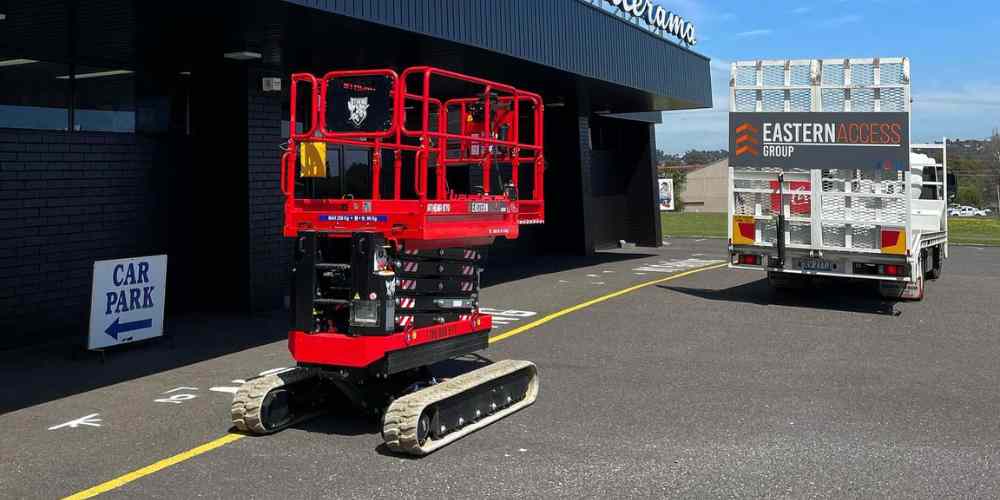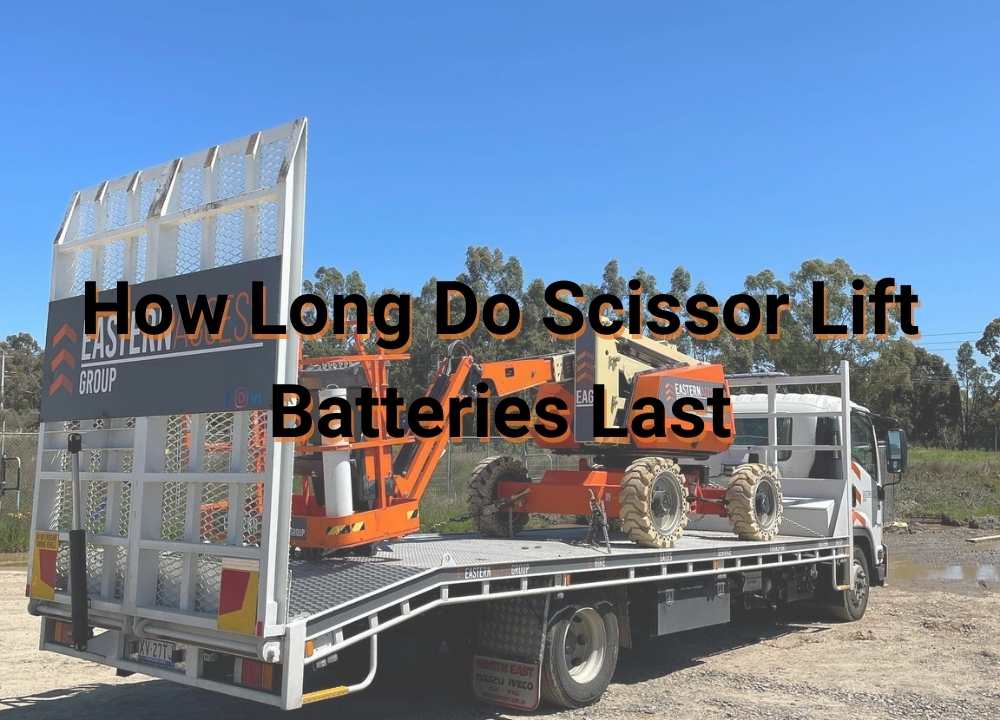How Long Do Scissor Lift Batteries Last
If something goes wrong with your electric scissor lift hire, you should examine the batteries. You should know the proper techniques for maintaining and charging the battery. To change the battery every year rather than every four or five years (at a minimum), you must be familiar with the charging operation guidelines.
Electric booms and scissor lifts are entirely dependent on batteries. A well-kept battery can obtain up to three times more equipment life.
Red signs suggest battery maintenance or replacement, including a battery pack that does not fully charge after you plugged in overnight or a machine that runs out of power early in the workday.
Find out more as we discuss how long do scissor lift batteries last.
Table of Contents
What Are Scissor Lift Batteries
What kinds of batteries do scissor lifts use? Scissor lifts often use lead-acid batteries that can be recharged.
As their name suggests, lead-acid batteries are made of lead and sulfuric acid. Through a chemical process, electricity is created by combining two substances. Batteries made of lead acid might either require maintenance or not.

Serviceable lead-acid batteries
A functional battery should have its fluid level checked regularly and only when fully charged. A complete charge will always result in a greater fluid level. The best water is distilled; tap water contains many minerals and chemicals that can damage your battery, but it’s still better than not having any. Regular maintenance and inspection are necessary to ensure fluid levels are correct. Rechargeable batteries are refillable
Maintenance-free batteries
The electrolyte levels do not need to be maintained for maintenance-free batteries, which are permanently sealed from the factory. The main advantage of the sealed construction is that it doesn’t require any maintenance beyond ensuring the battery is maintained clean and charged.
Scissor Lift Batteries Lifespan
How long your scissor lift battery will last during the day depends on various variables. However, as long as your scissor lift was charged the night before, it should last you the entire workday.
Unfortunately, a scissor lift battery’s lifetime is constant. In reality, battery manufacturers frequently predict that the lifespan of a scissor lift battery would range from 6 to 48 months.
Although every scissor lift battery ultimately has to be changed, the longevity of a battery is greatly influenced by how often it is used and how well it is maintained. For instance, a battery that is well cared for and rarely used may endure for more than ten years.
Scissor Lifts Batteries Maintenance Tips
For usable batteries, battery maintenance is a matter of life or death. Additionally, if you have maintenance-free batteries, you must ensure their cleanliness and condition.
Here are some of the batteries maintenance tips you should be observing to help extend your scissor lifts battery lifespan:
Monthly Wiring Check
To maintain your equipment functioning to its best capacity, the battery wiring should be checked each month. Ensure there are no wire insulation breaks that can result in a potential short while inspecting the wiring and wire connections. You should also ensure the terminals are tight and corrosion-free for a clean and tight connection.
Keep the job site's temperature moderate.
It’s clear that not all work situations, especially outside working sites, provide ideal weather. However, research has indicated that ambient temperature impacts a machine’s battery capacity. For instance, a battery will decline to 65% charge at 32 degrees F if it is ultimately charged at 80 degrees F. The battery’s efficiency will decline to 40% at 0 degrees Fahrenheit. The performance of your scissor lift batteries may be improved by just installing heaters in the winter and fans in the summer.
Amp-draw test your batteries
The amp-draw test ensures the battery is functioning following its correct specifications. A carbon pile battery tester or another superior battery tester must thoroughly assess the scissor lift batteries’ performance.
Check the water levels
Your lift’s batteries will charge more quickly and last longer if you maintain their proper water level. Low water levels result in hot areas because heat is not distributed uniformly.
Overwatering compromises battery performance by causing the battery to overflow. You check the water levels in your scissor lift batteries and put on the appropriate PPE.
Charge when not in use
Having fully charged batteries in all work conditions is ensured by charging your device after each usage. Keep the charger plugged in until the device is ready to be used again for optimal battery life. If the battery’s voltage drops below 7V DC, the smart chargers on Hy-Brid Lifts could decide not to take up a charge. These chargers also prevent overcharging batteries; they stop charging at 14.8V DC and resume when the voltage falls below 12.7V DC.
Charge-test the battery while it is recharging. Every battery is tested for functionality during a charge. If a battery needs to be replaced, it is preferable to do it during a charging cycle as opposed to when the device is in use.
The controls for scissor lifts are simple and easy. Operators can be trained in a relatively short period.
Frequently Asked Questions
It is preferable for the batteries if they are charged for a lengthy period, such as overnight, since short-term or “opportunity charging”—such as plugging in the scissor lift over lunch—can harm battery life.
Distilled water is the most typical form of water used in batteries. Deionized water and water from reverse osmosis are different kinds. The use of regular tap water is not advised since it can be too contaminated with contaminants that would reduce battery efficiency.
Because corrosion of internal battery manufacturing components is exacerbated in the acidic electrolyte at high temperatures, the battery may suffer damage. Heating is a physical result of water decrease, especially in the last phases of charge or unintentional overcharging.
Outside, scissor lifts are practical. In truth, challenging terrain scissor lifts were designed from the ground up to function on rocky, uneven terrain. Outdoor use was considered when designing the tires and engine power.
Conclusion
Unfortunately, every scissor lift battery ultimately loses its capacity to recharge and function properly. Your lift’s performance and lifespan are greatly influenced by the regular upkeep and maintenance you provide it and its batteries. Regularly carrying out easy maintenance might help your batteries last longer. The batteries should be charged following the manufacturer’s advised instructions specified in the machine’s operator’s handbook once the equipment is locked up for the day. The battery must be in good condition to ensure operating safety and optimal machine performance.

